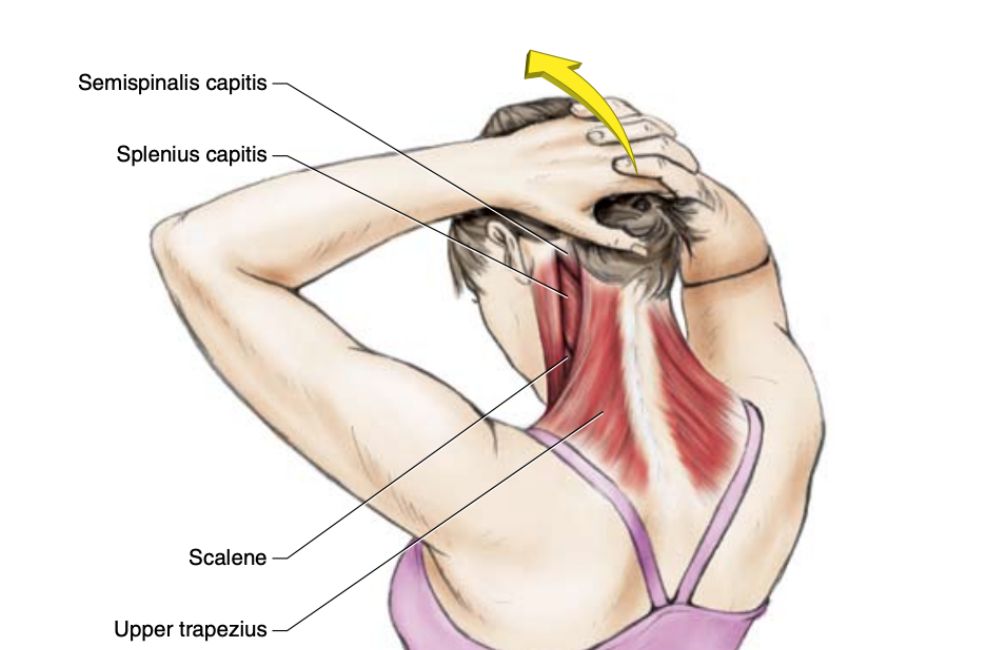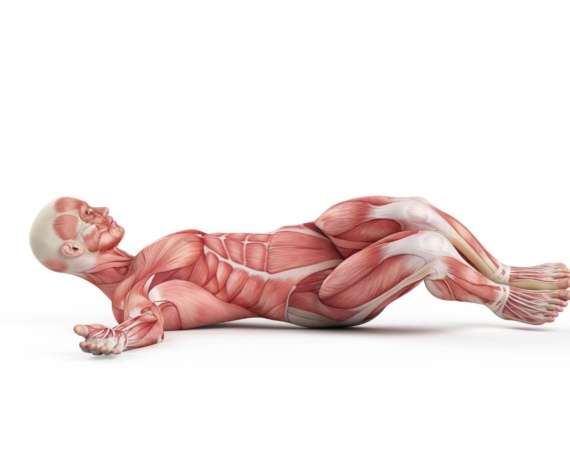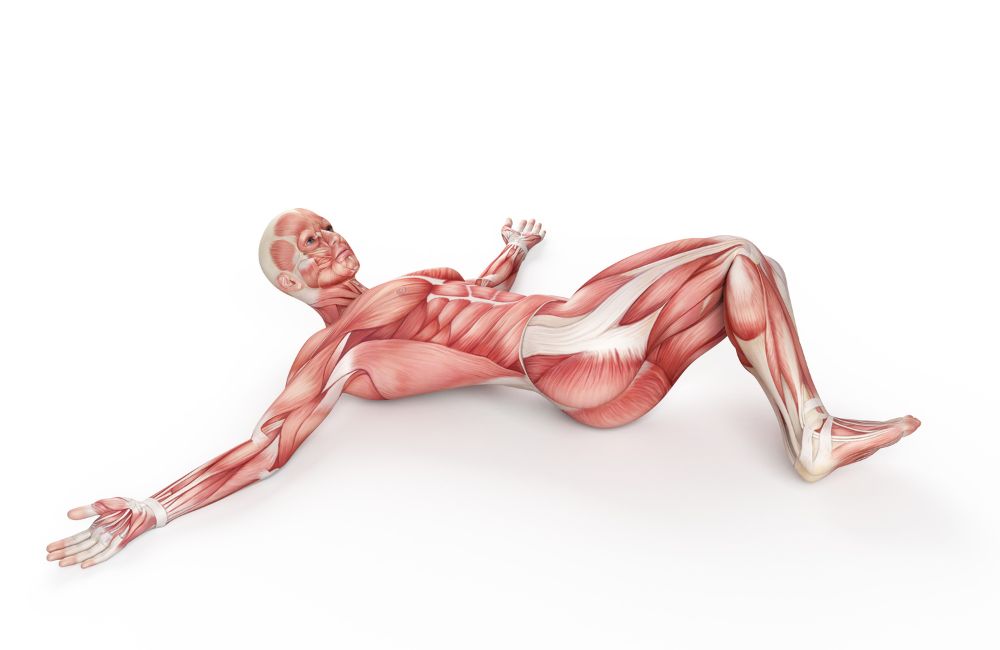
Stiff and achy lower back? Do these lower back stretches on the floor to get some fast relief and prevent future back pain.
There is nothing like nagging back pain that hinders you from enjoying the activities you love in your life.
But not just hobbies and vacations, back pain can even get in the way of performing the simplest things like walking, diving, and getting out of bed.
Yet, it’s a widespread problem in adulthood with up to 84% of the adult population suffering from it at some point in their life.
When the discomfort strikes, you suddenly feel the importance of having a stronger and healthy back. You realize how much of what you do every day actually involves your back and relies on the back muscles.
The good news is, simple lower back stretches can help alleviate the pain and loosen up the tight muscles. In as little as 5 to 10 minutes, you can feel brand new again and minimize the discomfort.
Even better, add a regular stretch regimen to your daily routine.
It can help build a stronger and more flexible back that prevents future back pain. It can also promote a better posture, which helps with back pain also.
If you don’t know where to start, start with these 5 lower back stretches for back pain relief.
As with any new exercise regimen, be sure to consult your doctor before starting. Not all back pain is muscle related and can be treated with stretching.
The Best Exercises To Strengthen Lower Back
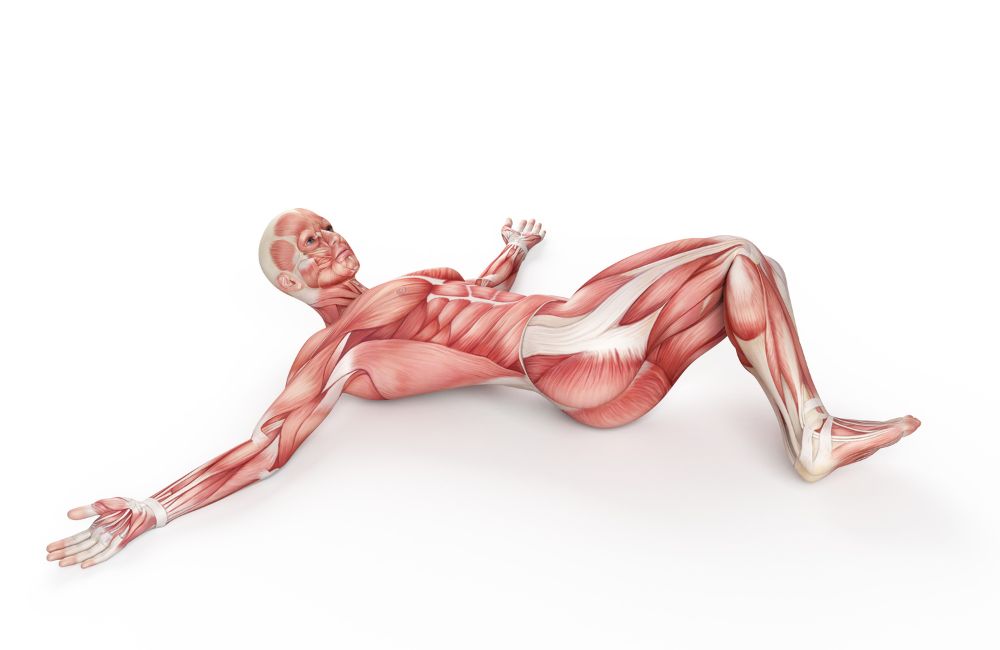
You’ll also like:
13 Amazing Stretches That’ll Restore Your Lower Back Health— No More Back Pain
7 Best Hamstring Stretches To Bulletproof Your Lower Back
Wig Wags
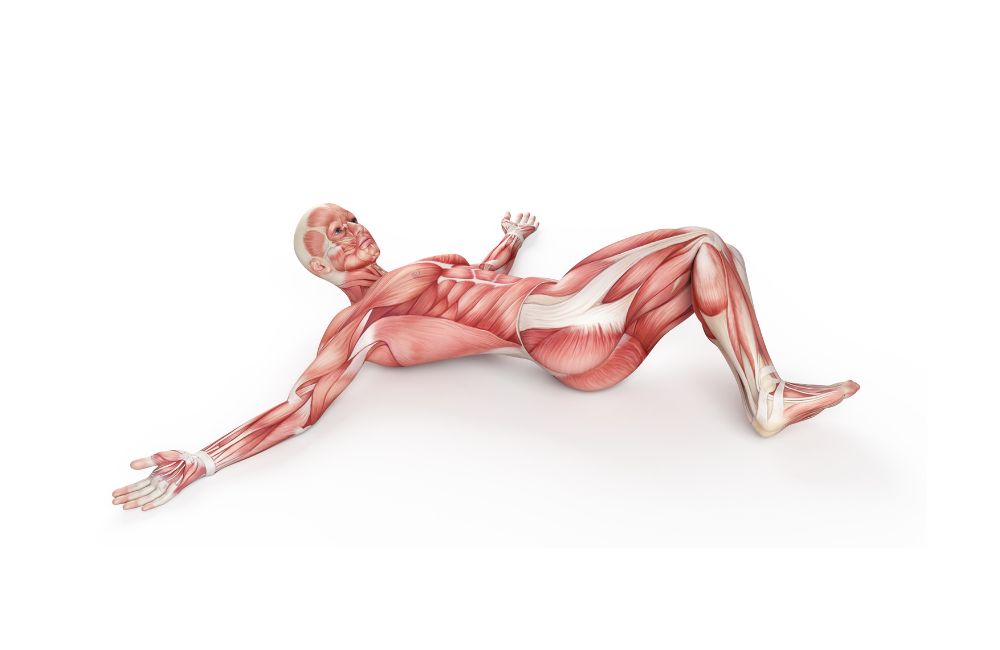
Wig wags are an easy exercise that can be performed almost anywhere. All you need is enough space to lie down on your back in order to complete this movement.
How to Perform
- Lie on your back, with your feet flat on the floor and your knees bent.
- Bring your feet and knees as close together as you can.
- Allow your knees to fall slowly down to the right side, keeping your shoulder blades flat on the floor.
- Hold this stretch for 10 seconds, then switch to the other side. Perform 10 reps per side, per session.
- Complete this movement 3 or more times per week.
Cat-Camel
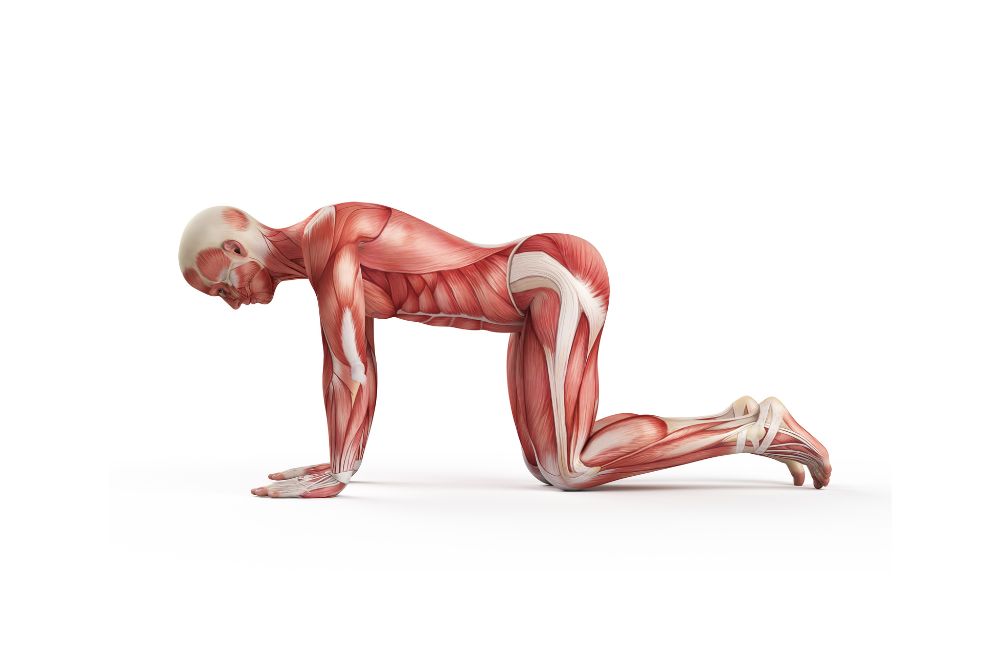
Many of the poses commonly used during yoga classes are named after animals. This is because animals tend to be naturally flexible and strong; we should emulate them!
How to Perform
- Start on your hands and knees, with your hands directly under your shoulders and your knees directly under your hips.
- On an in breath, allow your stomach to sink toward the ground as you bring your head up, looking forward.
- After holding this position for the entirety of your breath in, switch to a position of a rounded back, with your chin tucked into your chest as you breathe out.
- Complete 15 reps in each direction per session.
- Perform this movement 3 or more times per week.
Double Knee to Chest
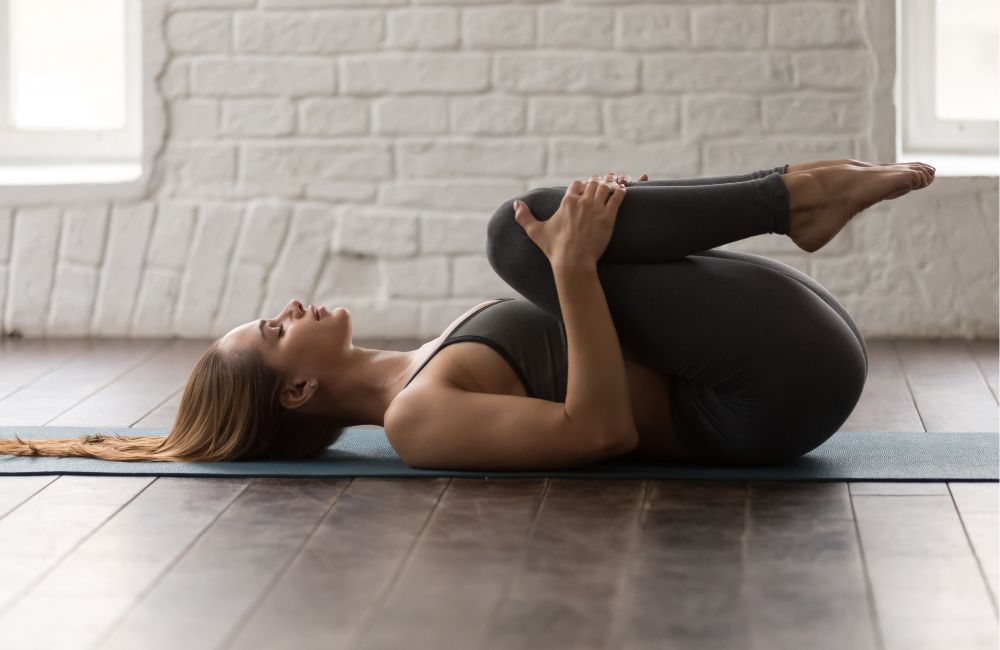
The hips are intimately involved with the low back. Therefore, it’s crucial that we work on hip flexibility in order to address low back pain.
How to Perform
- Lie on your back with your knees bent and your feet flat on the floor.
- Keeping your knees bent, tuck both of your thighs toward your chest, pulling them inward with your hands.
- Hold this position for 30 seconds and repeat it 4 times per session.
- Complete this movement 3 or more times per week.
Posterior Pelvic Tilt
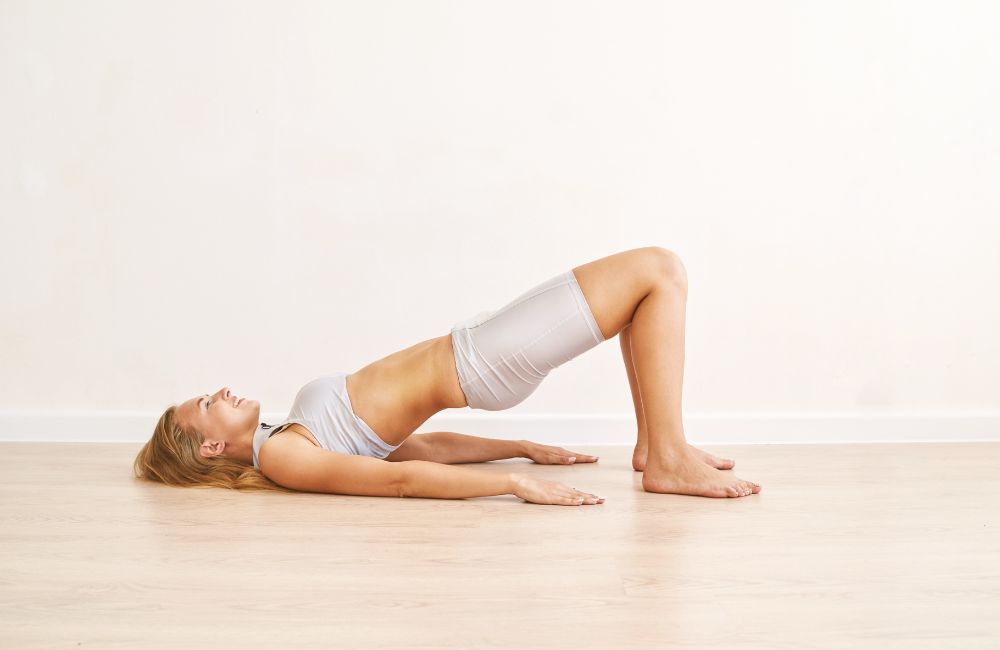
Many of us default to a position of anterior pelvic tilt for a variety of reasons. This posture is often due to weakness in our glutes and abs as well as tightness in our hip flexors.
How to Perform
- Lie on your back with your knees bent and your feet flat on the floor.
- Tighten your ab and glute muscles at the same time.
- This will cause your back to flatten out on the floor.
- Hold this position for 10 seconds and repeat it 10 times per session.
- Complete this movement 3 or more times per week.
Figure 4 Piriformis Stretch
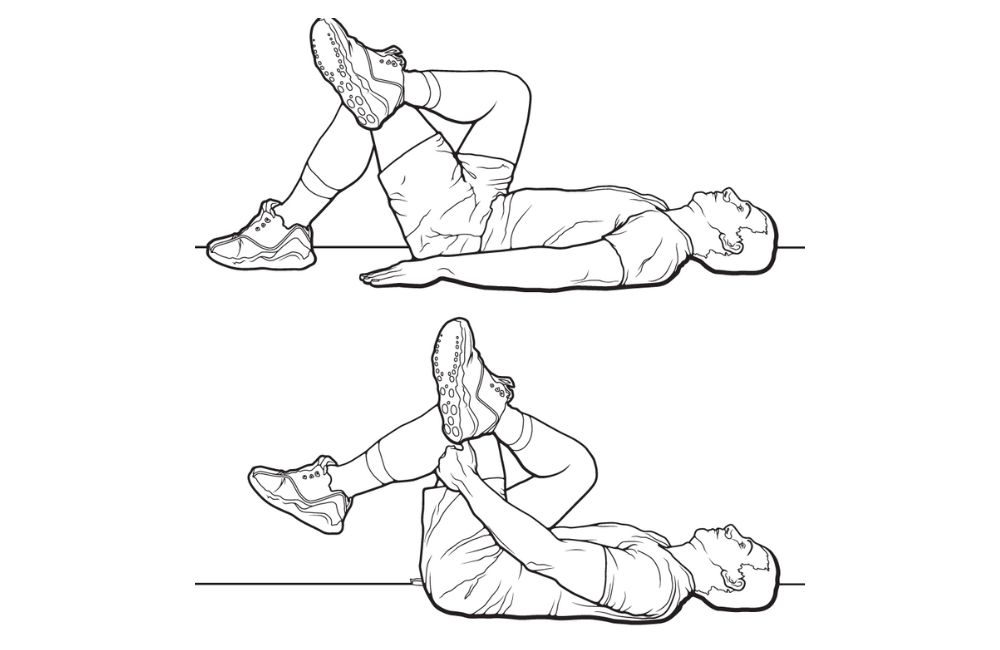
The piriformis is an important muscle for hip mobility and stability. Because it is so close to the low back area, tightness in this muscle can often cause lower back pain.
How to Perform
- Lie on your back, with your knees bent and your feet flat on the floor.
- Cross your right leg over your left, placing the outside of your right ankle on top of your left thigh, just above your left knee.
- Next, weave your hands through the opening in your thighs and interlace your fingers behind your left thigh.
- Pull your left thigh to your chest, bringing the right leg along with you.
- You should feel a deep stretch in your right buttocks.
- Hold this position for 30 seconds. Repeat 4 times per session on each leg.
- Complete this movement 3 or more times per week.
Plank
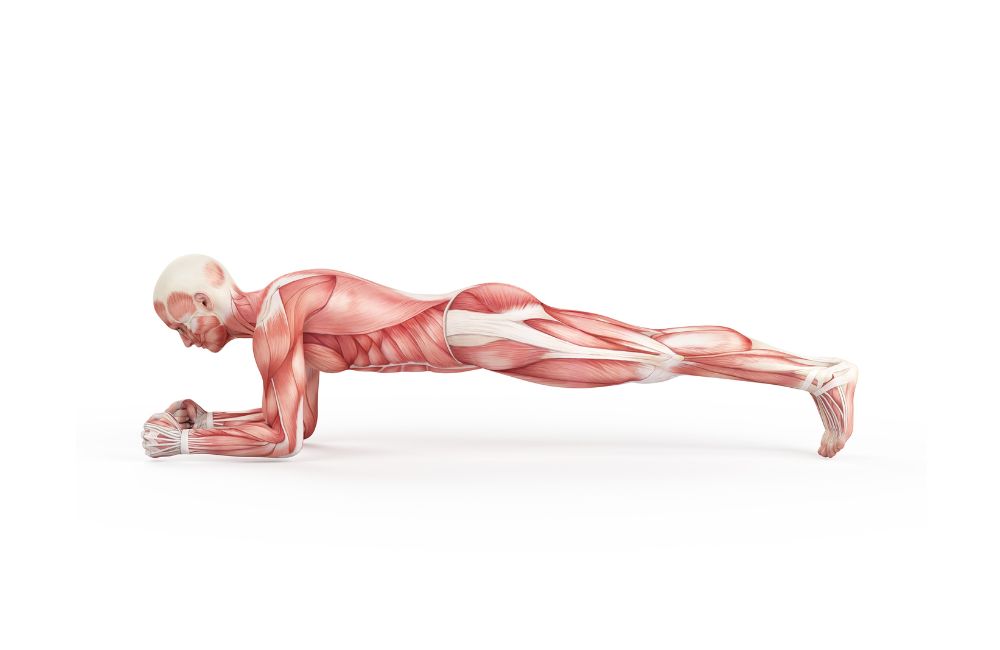
You’ve no doubt heard of planks before. This exercise makes it onto the list of every article about low back pain, and for good reason. Planks are excellent for increasing strength, stability, and even mobility in the low back.
How to Perform
- Start on your forearms and knees.
- Next, extend your legs behind you, placing your toes on the ground.
- Keep your back as flat as you can, maintaining a strong abdominal contraction.
- Hold for 30 seconds and repeat 4 times.
- Complete this movement 3 or more times per week.

